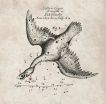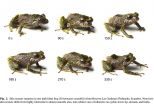(Press-News.org) In addition to antiretroviral medications, people with HIV may soon begin receiving a home exercise plan from their doctors, according to a researcher at Case Western Reserve University's Frances Payne Bolton School of Nursing.
"People with HIV are developing secondary chronic illnesses earlier and more frequently than their non-HIV counterparts," said Allison Webel, PhD, RN, assistant professor of nursing. "And heart disease is one for which they are especially at risk."
An estimated 1.2 million people nationally live with HIV, according to the Centers for Disease Control and Prevention.
Studies have shown that people with HIV can engage in a variety of moderate to intensive physical exercises that result in a range of benefits, from lower cholesterol to better cognitive and mental health outcomes.
But a search of research literature turned up just two programs specifically designed for people with HIV to exercise at home.
With the long-term goal of creating a new evidence-based, home-exercise intervention that doctors can share with HIV patients, researchers from Case Western Reserve, Kent State University and University Hospitals Case Medical Center wanted to first find out whether people with HIV even exercise at home.
They recruited 102 HIV patients to study their weekly exercise habits and found that most did exercise, but not intensely enough.
According to The Journal of the Association of Nurses in AIDS Care article, "A Cross-Sectional Description of Age and Gender Differences in Exercise Patterns in Adults Living with HIV," the researchers found that women exercised an average of 2.4 hours a week and men for 3.5 hours. The predominant exercise was walking, followed by climbing stairs, stretching and lifting weights.
Remove walking from the routine and the amount of time women spent exercising per week fell to 1.1 hours. They found that men exercised longer, but less strenuously than the women.
The American Heart Association recommends 30 minutes of moderate-intensity aerobic exercises five days a week, or 25 minutes of vigorous exercises three days a week and moderate muscle strengthening at least two days a week.
The study's participants were all on antiretroviral therapies, had an average age of 48 and were predominantly African-American (83 percent). They had lived with HIV for slightly more than 13 years and were on antiretroviral therapy for more than nine years. Most (80 percent) had a co-occurring health condition. Depression and hypertension topped the list.
Each had his or her height, weight and vital signs measured at the beginning of the study. All were asked to complete a computer survey of social and demographic questions and keep a seven-day diary to document daily exercise and its duration, frequency and intensity.
Now that the researchers know people with HIV exercise at home, Webel said the next step is to design a flexible plan that meets people at their initial levels and helps them progress to more intensive levels to maximize the health benefits of exercising.
INFORMATION:
Jacob Barkley, PhD, associate professor in exercise science at Kent State University; Christ T. Longenecker, MD, assistant professor of medicine at Harrington Heart and Vascular Institute, CWRU; Alison Mettelsteadt, RD, registered dietician at University Hospitals Case Medical Center; Barbara Gripshover, MD, associate professor of medicine, and Robert A. Salata, MD, professor of medicine and chair of the Division of Infectious Diseases and HIV Medicine at CWRU, contributed to the study.
The study received support from the National Institute of Allergy and Infectious Disease (grant #P30AI36219) and the National Center for Research Resources and National Center for the Advancing Translational Science, National Institutes of Health (grant #5KL2RR024990 and #KL2TR000440).
Today, ACS is launching its first open access multidisciplinary research journal. Aspiring to communicate the most novel and impactful science developments, ACS Central Science will feature peer-reviewed articles reporting on timely original research across chemistry and its allied sciences. Free to readers and authors alike, original research content will be accompanied by additional editorial features.
These additional editorial features include news stories contributed by the Society's award-winning science journalists, invited topical reviews (called Outlooks) from ...
Young children who received the 4CMenB vaccine as infants to protect against serogroup B meningococcal disease had waning immunity by age 5, even after receiving a booster at age 3 ½, according to new research in CMAJ (Canadian Medical Association Journal)
Serogroup B meningococcal disease is the leading cause of meningitis and blood infections in developed countries. Infants and young children under the age of 5 years are especially at risk, and there is a second peak of cases in the late teenage years.
The multicomponent serogroup B meningococcal (4CMenB) ...
COLUMBUS, Ohio--Researchers at The Ohio State University have discovered how to control heat with a magnetic field.
In the March 23 issue of the journal Nature Materials, they describe how a magnetic field roughly the size of a medical MRI reduced the amount of heat flowing through a semiconductor by 12 percent.
The study is the first ever to prove that acoustic phonons--the elemental particles that transmit both heat and sound--have magnetic properties.
"This adds a new dimension to our understanding of acoustic waves," said Joseph Heremans, Ohio Eminent Scholar ...
New observations made with APEX and other telescopes reveal that the star that European astronomers saw appear in the sky in 1670 was not a nova, but a much rarer, violent breed of stellar collision. It was spectacular enough to be easily seen with the naked eye during its first outburst, but the traces it left were so faint that very careful analysis using submillimetre telescopes was needed before the mystery could finally be unravelled more than 340 years later. The results appear online in the journal Nature on 23 March 2015.
Some of seventeenth century's greatest ...
New Haven, Conn. -- A Yale-led team has identified a promising new combination immunotherapy to enhance the body's ability to fight chronic viral infections and possibly cancer.
Their study was published March 23 in Nature Medicine.
Viruses that cause chronic infection, such as HIV and Hepatitis B and C, are able to persist in the body despite attack from T cells, the body's main line of defense against pathogens. They persist because, over time, our T cells weaken to the point of "T-cell exhaustion." To circumvent this process, the research team -- led by Susan Kaech, ...
Society should set a high carbon tax now to try and prevent climate change reaching a point of no return according to a new study.
The research, carried out by the Universities of Exeter, Zurich, Stanford and Chicago and published today in the journal Nature Climate Change shows that the prospect of an uncertain future tipping point should greatly increase the amount we are willing to pay now to limit climate change. Depending on the economic impacts of an abrupt change in climate and how quickly this is felt, the cost of carbon emitted now increases by 50 - 200%. Setting ...
The gradual but accelerating melting of the Greenland ice-sheet, caused by man-made global warming, is a possible major contributor to the slowdown. Further weakening could impact marine ecosystems and sea level as well as weather systems in the US and Europe.
"It is conspicuous that one specific area in the North Atlantic has been cooling in the past hundred years while the rest of the world heats up," says Stefan Rahmstorf of the Potsdam Institute for Climate Impact Research, lead author of the study to be published in Nature Climate Change. Previous research had already ...
Scientists have for the first time used DNA sequencing to trace the fatal spread of multidrug-resistant tuberculosis between patients in the UK.
Genetic analysis of the TB bacteria revealed how a 44-year-old man who died of the disease in 2012 caught the drug-resistant infection from a healthcare worker who had worked in South Africa, when both were admitted on the same medical ward four years earlier.
TB is spread by inhaling tiny airborne droplets from an infected person. The bacteria can survive in the lungs for long periods without causing symptoms - known as latent ...
A frog in Ecuador's western Andean cloud forest changes skin texture in minutes, appearing to mimic the texture it sits on.
Originally discovered by a Case Western Reserve University PhD student and her husband, a projects manager at Cleveland Metroparks' Natural Resources Division, the amphibian is believed to be the first known to have this shape-shifting capability.
But the new species, called Pristimantis mutabilis, or mutable rainfrog, has company. Colleagues working with the couple recently found that a known relative of the frog shares the same texture-changing ...
Verbal abuse, aggressive behaviour, criminal damage to objects--such incidents are to be expected within certain professions. Hardly anyone had included doctors in this thinking, however, although they too are exposed to such problems. Florian Vorderwülbecke and colleagues in the current issue of Deutsches Ärzteblatt International (Dtsch Arztebl Int 2015; 112: 159-65) investigate, for the first time, how often acts of violence and aggression against primary care physicians are committed in Germany. They surveyed 1500 doctors, asking which assaults they had been ...


